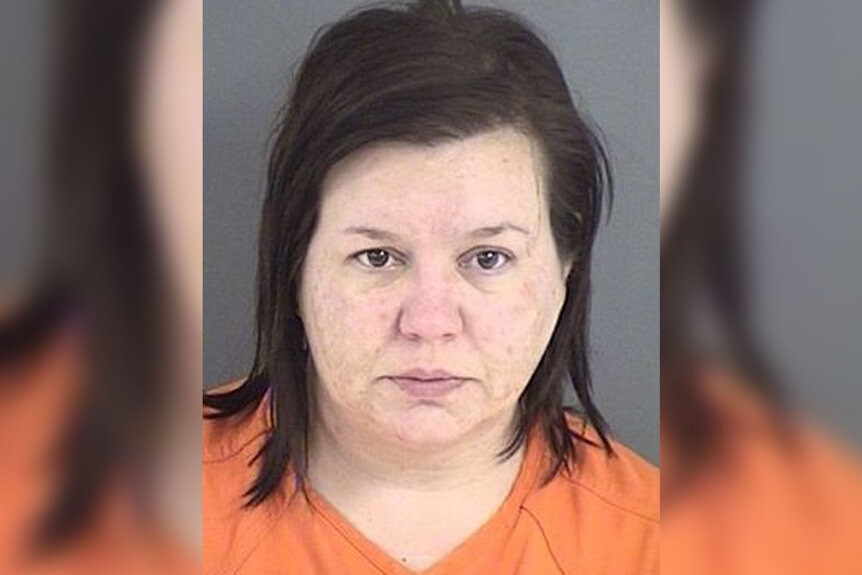Create a free profile to get unlimited access to exclusive videos, breaking news, sweepstakes, and more!
Texas Nurse Kills 5 Patients After Injecting Bleach Into Their Dialysis Tubes
Kimberly Clark Saenz preyed on patients while they were at their most vulnerable — during their dialysis treatment.

Murders A-Z is a collection of true crime stories that take an in-depth look at both little-known and infamous murders throughout history.
In the United States, 15 percent of adults suffer from Chronic Kidney Disease, leaving them prone to heart attack, stroke and early death, according to the Center for Disease Control and Prevention. For those affected, dialysis centers, such as those run by DaVita Inc., are a godsend, cleaning the blood of those whose kidneys can no longer do so.
On its corporate website, DaVita claims its name means “giving life” in Italian. In early 2008, however, lives were being taken at the DaVita Dialysis Center in Lufkin, Texas. A rash of cardiac events and fatal heart attacks were occurring at unprecedented levels. When investigators found out why, it was almost too much to believe: Nurse Kimberly Saenz was injecting bleach into the dialysis machines while patients were still hooked up to them.
Kimberly Clark Saenz was born in 1973 in Fall River, Massachusetts, but by adulthood found herself living outside Lufkin, a small town in East Texas, a couple hours north of Houston. In fall 2007, she began working as a licensed vocational nurse at the DaVita Lufkin Dialysis Center. Previously, she had been fired from several former health care jobs, including a Lufkin hospital, where she was accused to stealing drugs and faking a urine test, according to the New Haven Register.
While Saenz was married with two young children, her marriage had hit a rough patch. In 2007, her husband filed for divorce and obtained a protective order against her, according to the New Haven Register. That same year, she was arrested for public intoxication and criminal trespassing after a domestic disturbance with her husband, although they would later reconcile, reported the outlet. She also suffered from depression, and by early 2008 had begun taking medications for it, according to court documents.
Dialysis treatment lasts around four hours; the patient is hooked up to a hemodialysis machine, which removes toxins from the blood before pumping it back into the body intravenously. The common course of treatment is about three times a week, usually with little incident. In spring 2008, the DaVita Lufkin Dialysis Center saw a mysterious uptick in patients getting ill and going into cardiac arrest during their treatments. EMS was called to the facility 30 times in April, according to CBS affiliate DFW. In the prior 15 months, they had only been called twice. Many of the cardiac events ended in death.
Following the first two deaths on April 1, 2008, DaVita sent clinical coordinator Amy Clinton to look into the incidents and manage procedure.
“I was on the site on April 2,” she would later testify, according to Lufkin ABC affiliate KTRE. “The purpose was for me to come in and look at the two events and the circumstances around the two cardiac arrests.”
Clinton instituted several policy changes, meant to minimize risk and protect against another death at the clinic. These included reassigning which nurses performed which tasks during their shifts, with some exclusively administering medicine and others doing cleanup and monitoring duties.
On April 28, 2008, Saenz showed up to work and was told by Clinton that she had been reassigned for the day to work as a patient care technician. This did not sit well with Saenz, who felt it was beneath her. “You could tell she was upset,” Clinton later testified. Other people reported Saenz being “teary-eyed,” according to court documents.
Later that day, two patients at the clinic saw Saenz prepare a bleach solution and pour it into a container on the floor. The witnesses said they saw her draw the bleach up into a syringe and then inject into the IV lines of two other patients receiving dialysis, according to the Associated Press. Both witnesses immediately told Amy Clinton what they had seen, with one of them saying, “I’m a little nervous right now, and I’m worried because she's assigned to me,” according to court documents. Neither of the affected patients died, but grew ill and exhibited dangerous fluctuations in their blood pressure.
Clinton confronted Saenz, who said she was using bleach to clean the lines of an unused dialysis machine, a common practice at the clinic, and used a syringe to get a precise measurement, which Clinton said was not company policy, according to KTRE. She denied giving anyone medication or injecting bleach into their IV lines and was sent home for the day. Clinton then examined the bucket and syringes Saenz had been seen using, all of which tested positive for bleach.
Earlier that month, an official at the local fire department sent an anonymous letter to Texas state health inspectors, asking them to look into the incidents at the DaVita Lufkin Dialysis Center, according to Dallas CBS affiliate KTVT. “In the last two weeks, we have transported 16 patients,” the letter reads. “This seems a little abnormal and disturbing to my med crews. Could these calls be investigated by you?”
On April 29, Saenz was fired from the DaVita Lufkin Dialysis Center, and the facility shut down for two months. Two weeks later, DaVita released a statement saying "We believe the events that led to our voluntarily closing the Lufkin Dialysis center were the result of a criminal act by an individual who has been terminated and is no longer working at the center,” according to KTRE.
Co-worker Candace Lackey would later testify that Saenz was unhappy at DaVita and had expressed her dislike for several patients, all of whom either died or suffered medical emergencies over the past month, according to KTRE. Of five patients who died, Saenz had direct contact with them, according to court documents. Computers seized from her home would later reveal that, immediately following the first two deaths, Saenz had done an Internet search for “bleach poisoning” and whether or not bleach could be detected in dialysis lines, according to Nacogdoches’ Daily Sentinel newspaper.
On May 30, 2008, Lufkin Police arrested Kimberly Saenz, then 34, and charged her with two counts of aggravated assault for the incidents of April 28, according to the Houston Chronicle. A year later, Saenz was indicted for the five deaths that occurred there in April 2008, and charged with one count of capital murder and five of aggravated assault, according to KTRE. If convicted of capital murder, she could have faced the death penalty.
Kimberly Saenz trial didn’t start until March 2012. Following four weeks of testimony and 14 hours of deliberation, the jury found her guilty on three counts of aggravated assault. They also found her guilty of capital murder in count six of her indictment, which meant jurors believed she killed at least two of the alleged murder victims, according to the Daily Sentinel. On April 2, 2012, almost four years to the day of the first deaths at the DaVita Lufkin Dialysis Center, Saenz was spared the death penalty and sentenced to life in prison with no possibility of parole, and 20 years for each count of aggravated assault, according to The New York Times. Multiple appeals to her sentence have been denied.



















